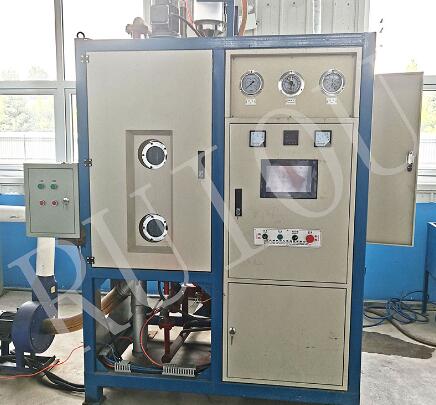- Home
- Product
- About Us
- Lost Foam Casting Process
- Lost Foam Casting Video
- Success Case
- Contact Us
Lost foam casting is a modern metal casting process that offers several advantages, including the ability to produce complex shapes with high precision. The success of this process depends significantly on the materials chosen for both the foam pattern and the final cast. This article delves into the key considerations and materials involved in lost foam casting.

The foam pattern is the centerpiece of the lost foam casting process. It is typically made from polystyrene or polymethyl methacrylate (PMMA), both of which have distinct properties suitable for casting.
Polystyrene: This material is the most commonly used foam for lost foam casting due to its excellent dimensional stability and ease of shaping. Polystyrene is lightweight, cost-effective, and provides good surface finish on the final cast product. Its ability to vaporize cleanly during the casting process without leaving significant residues makes it ideal for this application.
Polymethyl Methacrylate (PMMA): While less commonly used than polystyrene, PMMA is another option for foam patterns. PMMA offers higher strength and better dimensional accuracy, which can be beneficial for complex and high-precision castings. However, it is generally more expensive and slightly more challenging to handle.
The foam pattern is coated with a refractory material to create a shell that will withstand the molten metal. The selection of the coating material is crucial as it affects the surface finish and integrity of the final cast.
Refractory Slurry: A mixture of refractory grains, binders, and water is typically used to coat the foam pattern. The grains can be made from materials like aluminum silicate, zircon, or silica, chosen based on the required thermal resistance and surface finish. Binders such as colloidal silica or clay help in forming a durable and consistent coating.
Ceramic Shell: In some applications, a ceramic shell is preferred for its superior thermal properties and ability to produce finer details. The ceramic coating is often used for high-temperature alloys and applications where a smoother finish is critical.
Choosing the right metal alloy is essential for ensuring that the final cast meets the desired mechanical properties and performance criteria.
Ferrous Alloys: These include various grades of cast iron and steel. Cast iron is widely used for its excellent castability and mechanical properties, making it suitable for automotive components, pipes, and machinery parts. Steel alloys are chosen for their strength and durability, especially in applications requiring high tensile strength and resistance to wear.
Non-Ferrous Alloys: These include aluminum, magnesium, copper, and their alloys. Aluminum alloys are favored for their lightweight properties and good corrosion resistance, making them ideal for aerospace, automotive, and consumer electronics. Magnesium alloys offer a combination of low density and high strength, while copper alloys provide excellent electrical conductivity and corrosion resistance.
The sand used in the mold plays a crucial role in supporting the foam pattern and creating the final mold cavity.
Silica Sand: This is the most common sand used in lost foam casting due to its availability and cost-effectiveness. It provides good permeability and thermal stability, making it suitable for a wide range of metal castings.
Zircon Sand: Used for its high thermal conductivity and low thermal expansion, zircon sand is ideal for casting processes that require precise thermal control and minimal defects. It is particularly useful for high-temperature alloys and applications demanding superior surface finishes.
Additives and binders are used to enhance the properties of the sand and coating materials, ensuring the integrity of the mold during the casting process.
Bentonite Clay: Commonly used as a binder in sand molds, bentonite clay helps improve the sand’s cohesiveness and mold stability.
Silica Sol: Used as a binder in refractory coatings, silica sol improves the coating’s adherence to the foam pattern and its resistance to high temperatures.
Material selection is a critical aspect of the lost foam casting process, influencing the quality, precision, and performance of the final cast products. By carefully choosing the appropriate foam pattern material, coating material, metal alloy, and sand, manufacturers can achieve optimal results in their castings. For more information or to find a reputable supplier, contact us today to discuss your specific needs.